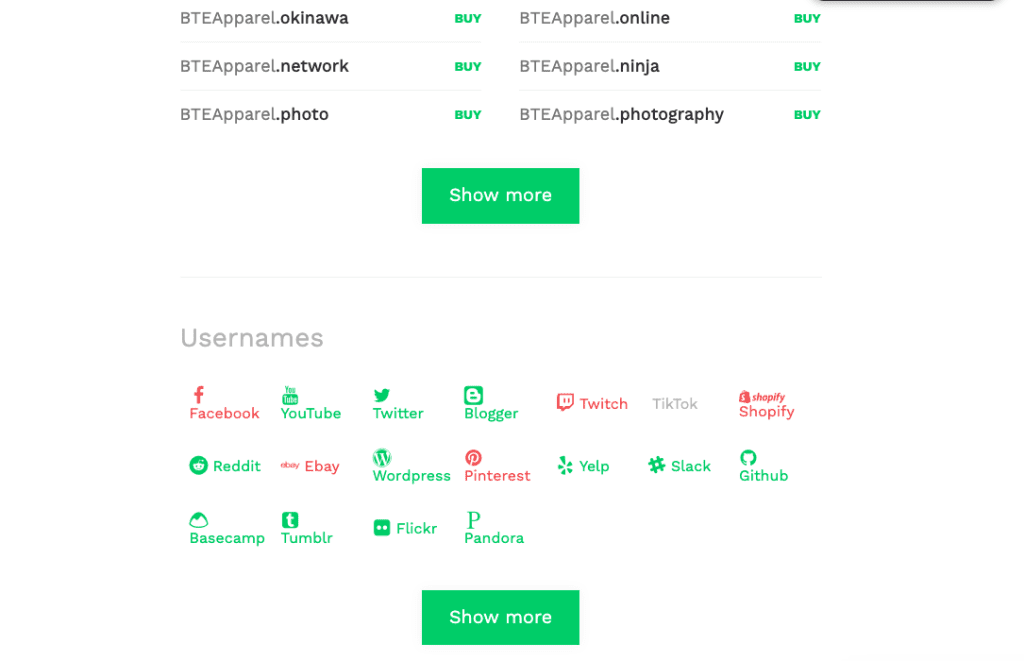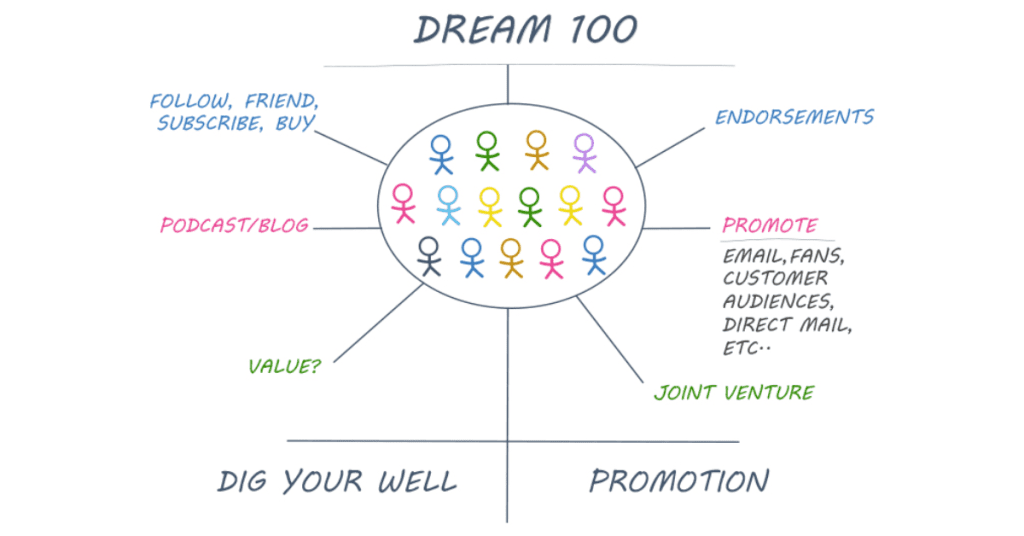If you are a chef, restaurant owner, or someone who loves to eat or cook, starting a food blog is definitely a good way to share your passion with the world. And if you are wondering how you can start a food blog without any technical skill or experience, you are at the right place.
Starting a website is a good way to share the food you like or the food your cook with the world. You can share the final product in the photo and then, your special recipe for them to cook the same dish.
Not only that, but when created properly, you can even make some money with your blog with you are sleeping.
Today, we are going to share detailed steps on how to start a food blog with WordPress as a food influencer.
Why You Should Create A Food Blog?

There are many reasons why you might want to create a food blog.
It could be your passion to cook, and you would like to share your passion with other like-minded people in the world. At the same time, if you created new recipes, you can share the results within your community. Some might give you some suggestions on how to make it better too.
Others may use a food blog to record and share all the food they tried worldwide. You could be a traveller that enjoys eating different food around. When you tried a nice food, or something special, you can share it in your food blog and document it in your blog.
With a food blog, you can also build your own community with like-minded people. And then, you might also monetize them by selling special recipe collections, kitchen gadgets or cookbooks.
How to Create A Food Blog With WordPress
In our guide today, we will show you how to create a food blog from scratch, without any experience or technical skill.
And to make sure that you are able to create one at the end of this post, we are going to make it as detailed as possible.
Step 1: Decide Your Food Niche and Target Audience
First of all, you need to know what you are going to create before starting it. This means you need to choose your style and what you are going to share.
If you are sharing food in common, you might not have the uniqueness. This is why you should always go niche and be the best in the niche.
For instance, your blog can be a food exploration blog, a recipe blog for different cuisine and so on.
No matter what niche you choose, you need to choose one to start with.
Here are a few of the most popular food niches that you can consider:
- Culinary-specific blogs such as Italian, French, Greek, Indian, or Chinese cuisine
- Trending diet blogs (gluten-free, paleo, keto, low-carb, vegetarian or vegan blogs
- Cookbook review blogs
- Food and beverage photography blogs
- Food and travel influencer blogs
- Food and beverage blogs
Before deciding on your niche, you should always spy on your competitors and see if people are working on the niche. This is important as you don’t want to start with a food niche that very few people are interested in.
You can always expand later if you want to.
Ask yourself:
- If you like the Keto diet, share your unique and mesmerizing recipe or review other restaurants by sharing their recipe photos and videos.
- Are you going to focus on a specific type of cuisine, such as Chinese or Western?
- Are you going to cover a variety of food-related topics, such as cooking techniques, restaurant reviews, or food science?
Always pick something that you are familiar with or passionate about. Only work with something that you are passionate about. Without passion, you are not going to be able to continue working on it for a long time.
Now you have picked your niche, it’s time to know who is your dream customer. As you are providing content, you want to make sure that you know who you are talking to. And how to create content that resonates with them.
Step 2: Get a Domain Name for your Food Blog
Some business does not understand the importance of the business name when they start out and often missed out by simply getting a domain name.
However, you should really treat this seriously as this will affect your over-branding. Ideally, you should have the same name across every platform. From your business name, domain name, and all your social media platform accounts.
A good domain name will create a professional image for your website and make it easier for your customers to remember you.
To check whether a name is available, normally you can go to a registrar and check whether the chosen name is available or not. And then, you can go to social media and see whether the page name is available or not.
But with this free tool called Namechk, you can check the availability for different platforms and domain names at once.

Then, you can head to a domain names registrar like Namecheap or Godaddy to buy the domain name. As soon as you get the available domain name, you should buy it straight away to avoid it being taken by others.
And if the .com domain is taken, you still can try to use a different TLD like .net, .info or .co.uk. If you are serving specifically in a country, it is advisable to start with the country TLD.
Step 3: Web Hosting For Your Food Blog
Web hosting service is a service that the company provide storage for your website. This is usually a server to store your website so that people can access it.
There are a few common web hosting services available now. This includes shared hosting, virtual private server (VPS) hosting and dedicated hosting.
Each type of hosting has its own advantages and disadvantages, and you should get the web hosting service that is suitable for you.
Dedicated Hosting
Dedicated hosting will have the best user experience as the entire server is leased for you. There is no sharing of resources at all. This type of hosting is usually for a big company that handles huge traffic and requires the stability of the server.
VPS Hosting
A VPS hosting, on the other hand, is a virtual machine that provides virtualized server resources on a physical server that is shared with other users. With VPS hosting, you get dedicated server space with a reserved amount of resources, offering greater control and customization than shared hosting.
Shared Hosting
For shared hosting, you are sharing the server resource with others. There is a fixed amount of users that can be stored in a server, but all of you are sharing the same resources. Meaning that during peak hour, the performance might be affected as everyone is sharing the same resources.
If you are just starting out, you can start with shared hosting first as it is a lower cost. And when your business grows, you can always opt to upgrade to a higher plan for better reliability.
There is a wide range of web hosting service providers to choose from, all offering similar features but at different pricing plans and service quality.
Some popular options include Bluehost, Dreamhost and SiteGround.
These are also recommended for WordPress websites. And they offer one-click installation for WordPress making it simple to create and launch your first WordPress food blog.
Step 4: Set up the WordPress Platform
WordPress is the most popular content management system (CMS) for creating blogs and websites. It’s open-source, easy to use and easy to customize.
Installing WordPress is rather easy with the one-click installation feature from the web hosting service provider. Bluehost for example, after you select your plan and complete payment, log in to your Bluehost dashboard and click on “Create Site”.
Then follow the instructions to complete the installation.
Step 5: Choose A Theme for Your Food Blog
A WordPress theme is an overall design for your website. It is the basis for a WordPress site.
To start, we will pick a theme that is lightweight, and fully customizable. And most important, templates are available for building the food blog fast.

For this, we will be using the Astra theme for the food blog.
To install it, go to Appearance > Themes and press Add New button.
You can find Astra by using the search box. Press the Install button and activate it when the option appears.
Next, you will need to install the starter template plugin for Astra. The start template plugin will give you access to all Astra templates and let you import the website design together with all related plugins into your website instantly.
A well-designed food blog will be visually appealing, with high-quality photos and a cohesive, attractive layout.
It will also be easy to navigate, with a clear hierarchy of information and a logical structure that allows visitors to find what they’re looking for quickly and easily.
Step 6: Install the Food Blog Template
We need to install the Starter Templates plugin to access the library.
Go to Plugins > Add New and look for the Starter Templates plugin by typing the name in the search box.
Install and activate the plugin when it appears on your screen.
You can open the template library from Appearance > Starter Templates.
Once there, select the page builder of your choice from the list that includes Spectra, Elementor and Beaver Builder.
Now, search with the keyword ‘food’ in the search bar. You’ll find a series of templates related to the food niche.
Pick the one that matches your blog theme design style. And then import it to your WordPress website.
Once installed, all the pages in the templates and the related plugins will be installed.
Step 6: Install the Plugin for Food Blog
For a food blog, there are not many plugins required. The standard plugins include the SEO plugin, backup plugin, and Caching plugin is the basic.
However, for a food blog, you can include another two plugins.
1. Recipe plugin
Recipes are important to a food blog. This is the unique content that you shared with your audiences. And for most cases, it’s the free lead magnet that brings in new visitors.
Compared to a manual-type recipe, you can create the recipe easier and nicer with the custom design on the plugin. Most plugins also provide some features to rank your recipes better in SEO.
2. Image Optimization Plugin
There are a lot of images that you will upload to your website for a food blog. And site loading speed is very much related to how many images you have on a page, and how big is the file.
This is why you want to optimize the images on your site is by using an image optimization plugin. It can be done by reducing image size or converting to a format that loads better like WeP.
How To Promote Your Food Blog

Having a nice blog ready is good, but you need visitors. This is why you need to implement marketing strategies to bring in more visitors to your website.
Social Media Marketing
There are many potential audiences on social media. And most of them are in a group or forum for the topic they are interested in. This includes a group about food, travel and cooking tips. You can sign up for different social media accounts like the Facebook page, Instagram, Pinterest or TikTok and start posting content like photos and videos, and then link back to your blog.
Social media are meant for social. Make sure you engage with your followers and interact with them so they feel they are close to you. This will in return build a loyal fan.
SEO Marketing
SEO is the best long-term organic traffic strategy. If your blog is ranked for certain keywords, you can get free traffic from the search result.
For each of your posts, optimize it by including relevant keywords in your titles, headings and contents. With the help of plugins like Yoast SEO or AIOSEO, you can optimize your page to comply with the technical SEO requirement and optimize for your target keywords.
Email Marketing
Email marketing is one of the effective ways to send updates and newsletters to your subscribers. It can be an update when you have a new post, or a nurturing email to provide value and build relationships with them.
To automate your email marketing process, you can use an Autoresponder like GetReeponse to send out the email automatically.
Collaborations
To grow your reputation fast, you can have some collaborations with other influencers or bloggers in your food niche. They already have a group of audiences that are interested in your blog. And at the same time, your audience might be interested in theirs.
Through collaborations, both of you can benefit from each other’s audiences to direct them to your content.
Paid Ads
To buy your way in, you can use paid ads to promote your blog. This might not be the best strategy if you don’t know what you are doing. You will end up burning your ad budget.
You can start with Facebook or Tiktok ads, test on different ad variants and see which is the winning copy. Then scale it to get better results.
There are many different ways in promoting your food blog. Those that we include here are digital marketing methods. You can also try other methods like joining the local community, food events or other events to promote and grow your food blog.
How To Monetize Your Food Blog

Aside from sharing the work, one of the main goals to build the food blog is to make money. There are several ways that you can include in your food blog to monetize it.
Display ads
If you have a huge amount of quality traffic, you can make money by renting out spaces on your food blog. We call these display ads.
You can either sell the display ad to other business owners that are looking to buy ads or you can join an advertising network like Google AdSense. Google AdSense will then evaluate your website and insert relevant ads to your website. Once your visitors click on the ad, you will get paid for the ad cost.
Affiliate marketing
Affiliate marketing is one of the best ways to monetize your food blog. You can earn money by selling others’ products or services on your blog. There is no need for you to design and create the product, or handling the sales and customer support.
All you need to do is to refer sales to the product owner and get commissions for every successful sale.
For example, you can promote kitchen appliances or diet recipes in your food blog and when someone bought from your link, you will earn a commission.
Sponsored posts
In your food blog or even your social media, you can write sponsored posts about a product or service in your niche and get paid for promoting the product.
It is important to disclose that it’s a sponsored post so that your readers know that you are paid to review the product. This is sometimes a legal requirement for some countries to disclose product promotion.
Selling products
Ideally, after creating the recipe collections in your food blog, you can turn them into a book and sell it out to respective audiences.
Or, you can leverage business models like dropshipping or print-on-demand to sell your own product to your audiences. Both these business models are good because you don’t need to handle the production and shipping of the product. Your supplier will complete the entire process for you. You just need to sell and handle customer service.
Offering consulting and coaching services
If you have expertise in a specific area of food, such as recipe development or food photography, you can offer consulting or coaching services to other food bloggers or businesses.
Else, you can have a course to teach people how to have a healthy diet or lose weight.
While monetizing your food blog is the main goal for your food blog, you should not overdo it. You should always provide value to your audiences, including selling products to them.
Make sure that the product is good, then only promote it.
Final Thoughts – Creating a Success Food Blog
By now, you should know step-by-step how to create a successful food blog from scratch. If you missed out on any step, always go back and refer to it.
Starting a food blog can be both a rewarding and fun project. But, building a successful one will require dedication and hard work too.
You need to constantly work on publishing new content, engaging with your audiences and being an authority figure in the food industry.
If that’s what you want, then don’t hesitate and go ahead. Start your journey today.





